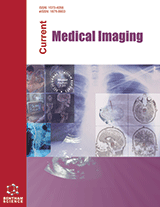
Abstract
Objective: Coronavirus-related disease, a deadly illness, has raised public health issues worldwide. The majority of individuals infected are multiplying. The government is taking aggressive steps to quarantine people, people exposed to infection, and clinical trials for treatment. Subsequently recommends critical care for the aged, children, and health-care personnel. While machine learning methods have been previously used to augment clinical decisions, there is now a demand for “Emergency ML.” With rapidly growing datasets, there also remain important considerations when developing and validating ML models.
Methods: This paper reviews the recent study that applies machine-learning technology addressing Corona virus-related disease issues' challenges in different perspectives. The report also discusses various treatment trials and procedures on Corona virus-related disease infected patients providing insights to physicians and the public on the current treatment challenges.
Results: The paper provides the individual with insights into certain precautions to prevent and control the spread of this deadly disease.
Conclusion: This review highlights the utility of evidence-based machine learning prediction tools in several clinical settings, and how similar models can be deployed during the Corona virus-related disease pandemic to guide hospital frontlines and health-care administrators to make informed decisions about patient care and managing hospital volume. Further, the clinical trials conducted so far for infected patients with Corona virus-related disease addresses their results to improve community alertness from the viewpoint of a well-known saying, “prevention is always better.”
Keywords: Corona virus-related disease, clinical, pandemic, prevention, complications, machine learning.
[PMID: 32214079]
[http://dx.doi.org/10.1016/S0140-6736(20)30673-5] [PMID: 32197103]
[http://dx.doi.org/10.1016/j.antiviral.2020.104762] [PMID: 32147496]
[http://dx.doi.org/10.1016/S0140-6736(20)30627-9] [PMID: 32178769]
[http://dx.doi.org/10.1148/radiol.2020200432] [PMID: 32073353]
[http://dx.doi.org/10.1073/pnas.2005615117] [PMID: 32350134]
[http://dx.doi.org/10.1056/NEJMsr2005760] [PMID: 32227760]
[http://dx.doi.org/10.1056/NEJMp2005630] [PMID: 32227757]
[http://dx.doi.org/10.1016/j.jaut.2020.102433] [PMID: 32113704]
[http://dx.doi.org/10.1016/j.asoc.2020.106580] [PMID: 32837453]
[http://dx.doi.org/10.1016/j.chaos.2020.110050] [PMID: 32834604]
[http://dx.doi.org/10.1016/j.chaos.2020.110058] [PMID: 32834611]
[http://dx.doi.org/10.1007/s10640-020-00483-4] [PMID: 32836865]
[http://dx.doi.org/10.3390/info11060314]
[http://dx.doi.org/10.1371/journal.pone.0232391] [PMID: 32330208]
[http://dx.doi.org/10.1016/j.chaos.2020.110059] [PMID: 32834612]
[http://dx.doi.org/10.1126/science.abd4585]
[http://dx.doi.org/10.1038/s41577-020-00434-6] [PMID: 32887954]
[http://dx.doi.org/10.1093/cid/ciaa247] [PMID: 32161968]
[http://dx.doi.org/10.1126/science.abc5441]
[http://dx.doi.org/10.1148/radiol.2020201187]
[http://dx.doi.org/10.1056/NEJMp2003539] [PMID: 32160451]
[http://dx.doi.org/10.1016/j.thromres.2020.04.013]
[http://dx.doi.org/10.1056/NEJMcp2009249] [PMID: 32329974]
[http://dx.doi.org/10.1056/NEJMoa2007016] [PMID: 32275812]
[http://dx.doi.org/10.1056/NEJMoa2001282] [PMID: 32187464]
[http://dx.doi.org/10.1038/s41577-020-0308-3] [PMID: 32273594]
[http://dx.doi.org/10.1016/S1473-3099(20)30120-1] [PMID: 32087114]
[http://dx.doi.org/10.1016/j.chaos.2020.110137] [PMID: 32834583]
[http://dx.doi.org/10.1016/j.measurement.2020.108288] [PMID: 32834324]
 55
55 3
3












